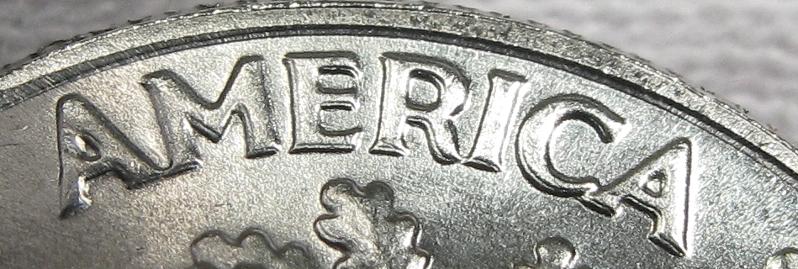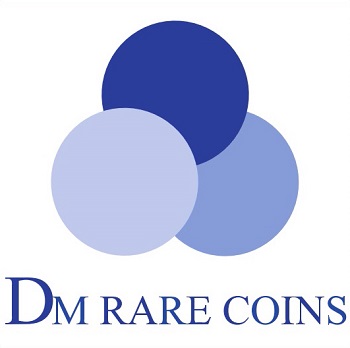January 21, 2016
The DDRs of 1970-D

Ok, we will stop with the alliteration. Actually, we were planning to title this piece , “The Doubled Dies of 1970-D,” or even “The Doubled Die Dimes of 1970-D.” Then we realized both that we are specifically discussing reverse doubled dies and that there are also two major Doubled Die quarters worthy of analysis. The Doubled Die Reverse coins of 1970-D are very appealing, but the market has been hampered, for a long time, because the various DDRs can be very hard to tell apart. There are at least four DDR dimes (CONECA lists five), three of which are very nice but somewhat similar. Also, there are two major DDR Quarters, as well as a few very minor ones, and two types of worthless Hub Doubling to be on the lookout for. There are also various die states of each variety, and the strength of the doubling can change dramatically, based on which die state you have.
A cross-reference study of the CONECA Master
Listings, PCGS CoinFacts, the NGC Variety Plus, and the Cherrypicker’s Guide does
little to determine which of the DDRs you possess; even with these resources
handy, one almost requires examples of each, in hand, to make the
proper comparisons. We are very fortunate to have recently acquired a small hoard
of 1970 Doubled Die Reverse dimes and quarters, in high grades, which has made just
such a study possible. Given this rare opportunity, we have cracked the code, so to speak, on these varieties
and have developed some quick and easy guidelines to tell them apart. We hope
you will find this reference and pictorial guide interesting and useful.
1970-D Dimes
While all known varieties have moderate doubling on the torch, leaves, and ONE DIME, the best way to distinguish between the four DDR dimes of 1970-D is by the number of involved letters, direction, and strength of the doubling on UNITED STATES OF AMERICA, and particularly AMERICA. From widest to most narrow, the rank of these varieties is: FS-802, FS-801, CONECA DDR-003, CONECA DDR-005. We have found it almost useless to trace die lines as diagnostics on these dimes, due to the microscopic size of any die lines that do appear, and their frequent disappearance due to even the mildest die erosion. Many of the dimes of 1970-D develop heavy frost in the fields, which obscures such lines very quickly. Thus, die lines simply are not a reliable tool for attribution, unless the variety is already known. As we have stated, it is much easier to judge the direction and strength to attribute the variety, as we have done below.
Additionally, the strength of the doubling varies greatly, depending on the die state. Throughout the pictorial guide, we have chosen to illustrate the dimes in Late Die State, representing the minimum amount of doubling visible on each variety. Earlier die states will have smoother, silkier surfaces, considerably less frosty erosion, and crisper doubling. Some of these dimes were Prooflike or Semi-Prooflike in their Early Die States.
DDR FS-802
Strong spread of UNITED STATES OF AMERICA, in addition to moderate doubling on torch, leaves, and ONE DIME. Direction of doubling is southwest, but notably widest to the west.
DDR FS-801
Strong spread on STATES OF AMERICA and lighter spread on ED of UNITED, in addition to moderate doubling on torch, leaves, and ONE DIME. Direction of doubling is southwest, but about equidistant west and south, unlike FS-802.
Strike doubling shows on the first few letters in our picture of UNITED, making it seem very similar to the UNITED on FS-802. This is an illusion, and a good reason to use AMERICA as the primary guide.
CONECA DDR-003
Moderate spread on TES OF AMERICA, in addition to moderate doubling on torch, leaves, and ONE DIME. Earlier impressions may show very minor doubling on UNITED STA. Direction of doubling is southwest, with minimal spread west and the strongest spread clearly to the south.
Some examples will show a short die scratch above Roosevelt’s eyebrow. The obverse die was changed at some point, and not all examples will have this feature. Therefore, this die line must be used with caution. Again, die lines are of limited usefulness in this series, generally. Because of the two obverse dies used with DDR-003, finding this obverse paired with a doubled die reverse will confirm the variety, but its absence will not disprove the variety, either.
Other Varieties
There are two more listings in CONECA, DDR-002 and DDR-005. While DDR-005 is described as having "light spread on AMERICA," CONECA DDR-002 has not been examined by CONECA, and the possibility exists that it is merely a die state of one of the other varieties shown above (Wiles). We hope to add an example of DDR-005 soon. Only FS-801 and FS-802 are eligible for variety attribution at PCGS. NGC has added CONECA DDR-003 to their Variety Plus Catalog, in addition to the other two.
1970-D Quarters
There are two major DDR 1970-D quarters, FS-801 and FS-802. At a glance both varieties may seem similar, but FS-802 shows notably more doubling than FS-801, and somewhat stronger doubling, at that. Some other varieties exist with tiny amounts of doubling on the lettering, but these are very minor. Additionally, virtually all 1970-D quarters show hub doubling (no added value) on the lower leaves and branches, though the degree varies from die to die.
1970-D DDR FS-802
Light to moderate doubling on most letters in UNITED STATES OF AMERICA, QUARTER DOLLAR, and the left half of E PLURIBUS UNUM. Doubling is to the northeast, and is the strongest on STATES and QUARTER DOLLAR, with sharp notches on lower right serifs of STATES, AMERICA, and RTER; and wide notches on the upper left corners of STATES QUARTER, and DOLLAR. Strong extra thickness shows on AMERICA. Nice doubling on right branch stem. All observed examples of FS-802 show a tiny, curved die scratch connecting the bottom right stand of F to the crossbar, in the word OF.
1970-D DDR FS-801
Decidedly light doubling, to the northeast, on parts of the lettering. Strongest on the bottom right serifs of STATES, E PLUR, which looks very similar to FS-802. However, doubling is very weak elsewhere. Faint spread on upper left serifs of QUA, and very little to no spread is observed on DOLLAR or AMERICA. Also, the lack of wide notches atop QUARTER DOLLAR, the missing doubling on the right stem, and the absence of a die scratch inside the F of OF give away the attribution, quickly.
Other Varieties
Another similar DDR is listed as CONECA DDR-005, but has not been included in the Cherrypicker's Guide. Two other minor DDRs are known, and two hub doubled varieties are known. Beware of varieties that are limited to faint separation on the lower leaves and branches, as these are Hub doubled dies of no added value. Only FS-801 and FS-802 are eligible for variety attribution at PCGS and NGC.
Conclusions
Clearly, there are numerous varieties and a number of nuances to consider when examining the DDRs of 1970-D. However, the varieties featured above are the nicest and most collectable of the known variations. It happens that FS-802 is easily the nicest DDR of both the 1970-D dimes and the 1970-D quarters. The FS-802s also seem to be somewhat scarcer than FS-801, in general.
As a whole, these many DDRs are rather easily located on the market. Individual varieties are tougher, and high grades are very scarce, and very rare above MS66. In terms of strike designations, none exist for Washington quarters, but regarding Full Bands Roosevelt dimes, only 3 1970-D DDR FS-801 Dimes have been graded as FB at PCGS, and no FS-802s. NGC has also graded 2 FT FS-801 dimes, and no FS-802s. When collecting these coins with grade and die variety in mind, a rather common, generic DDR can quickly become a rare find.
Bibliography & Recommended Sites
Fivaz, Stanton. Cherrypicker's Guide To Rare Die Varieties of United States Coins. Fifth Ed., Vol. 2. Atlanta. Whitman Publishing, LLC. 2012, p117-118, 225-226.
NGC Variety Plus Catolog. https://www.ngccoin.com/coin-varieties
Wiles, James. CONECA Master Listings. http://www.varietyvista.com
